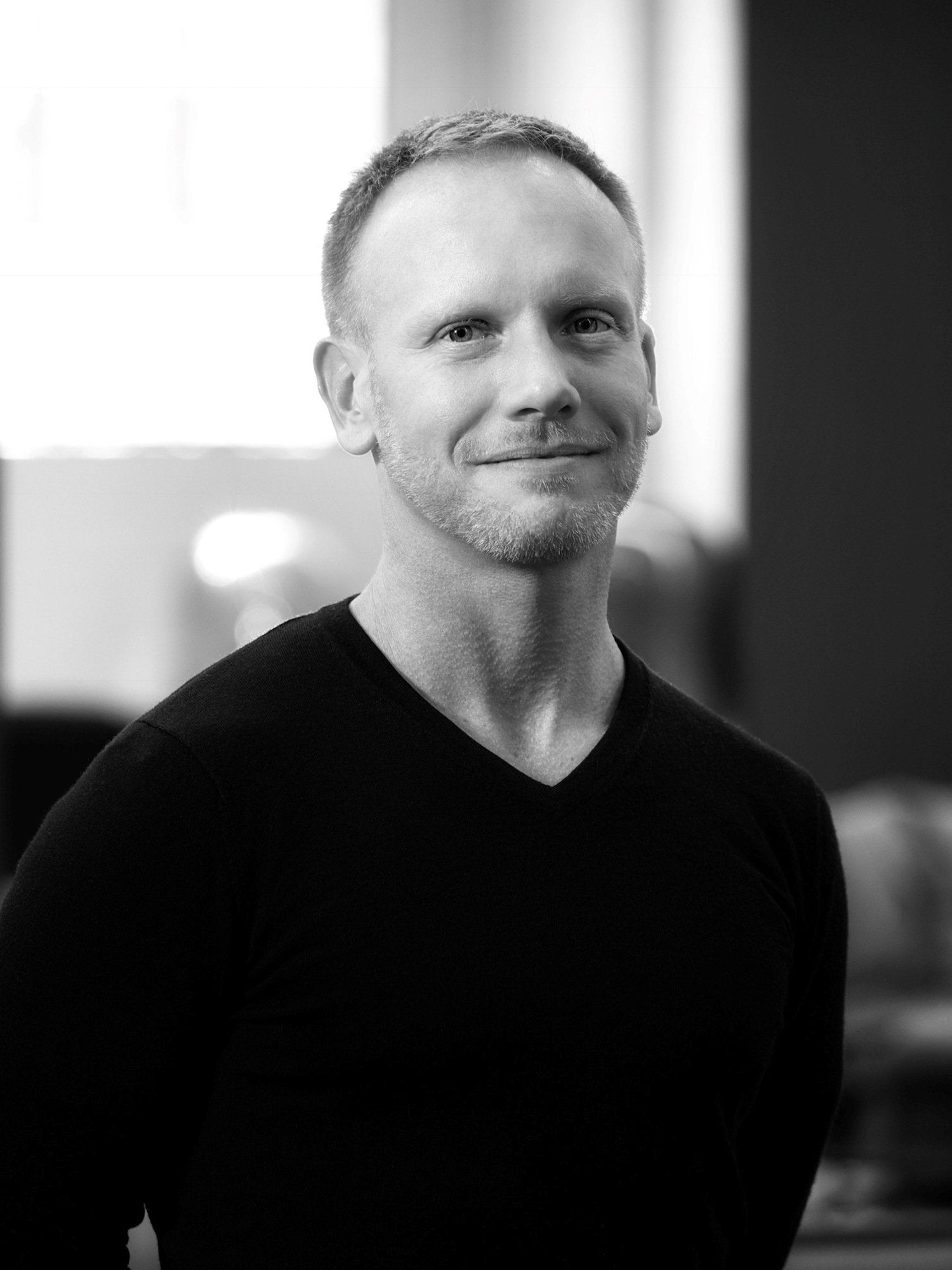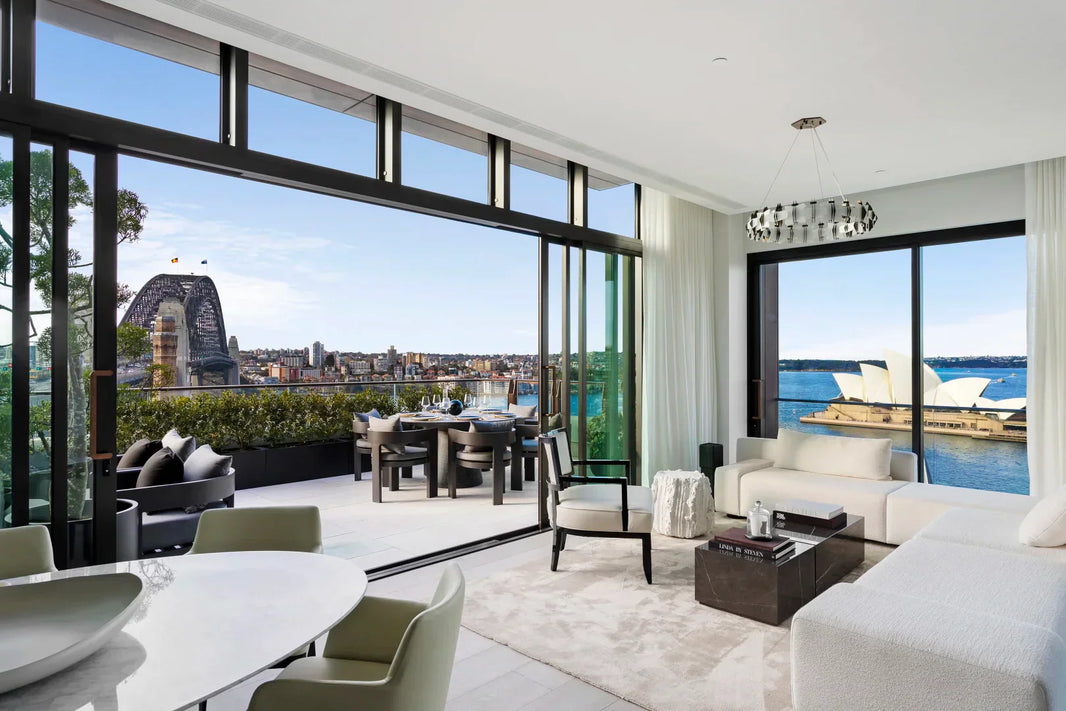- What initially inspired you to pursue a career in interior design?
I always wanted to something in the creative realm. I recall weekends as a
child looking at display homes in the Saturday newspaper and ‘critiquing’
them. And while I felt it was heading more into the graphic design realm, I
discovered through Art, Graphics and Architecture, that Architecture provided
more boundaries – so to speak – whereas art and graphics felt more limitless
- How did you make your start in the industry?
I studied Architecture at Deakin University, and ended up getting a
scholarship to work at Ken Yeangs Architecture office in Kuala Lumpur (TR
Hamzah and Yeang) which my first foray into the design world. It was also my
first time overseas, so I was shocked professionally and culturally, but an
experience I am grateful for.
- Did you have a mentor/role model that you looked to?
I’ve never been a role model type of person. I think as designers, we can
sometimes have hits and misses – and we often evolve with time (or trends)
and the team we have supporting our companies. I do tend to be enamoured
by European designers such as Vincent Van Duysen or American designers
Bates Masi. In Australia, I’m often admiring William Smart (Sydney) and
Kennedy Nolan (Melbourne) and Richards and Spence (Brisbane)
- Where do you look to find inspiration?
We live in an age where our clients look for inspo via Pinterest and Instagram
at a level that can be somewhat challenging, so I do try and avoid these. I will
generally look for inspo via existing features and details (even if the project is
being demolished) and context of location and most importantly, environment
principles or outlooks/views as the key drivers before I question asking for a
clients Pinterest page (as an example)
- What is your design process, from initial concept to final execution?
We always like to begin with questions about emotional drivers. Sometimes
this can be as quirky as to what is your favourite dining experience, or a
clothing brand. This can help us conjure up a feeling or aesthetic that
summarises a personality trait. If we can tap into a personality, then we can
often be more successful with nailing the design. We also like to do a series of checklists to help us understand processes of living.
After presenting a concept in coloured representation, we often find that with the aid of our processes, we have to do minimal changes from concept to documentation, and this has allowed us to complete many projects in the past 8 years of Tecture. We also tie in our own site analysis to ensure the philosophy we create has heart behind it. Many clients have different levels of processing, so we sometimes have to adjust the methodology slightly after briefing, and sometimes, this may include 3D representation to really sell the vision.
- What is the project that you are most proud of?
I don’t have a favourite! I know that’s an excuse to not answer the question,
but I love our Deans Marsh house as it explored rammed earth both
Architecturally and Interior Design materiality, and our Blade House for the
same reasons but with concrete, and our Balmoral mid Century House
because it showcased a ‘heritage’ restoration of a style period I admire. They
all hold a special place.
- What do you consider to be your signature style or approach to interior design?
A lot of our work has been published, and we have been known for creating
outcomes that present more high end than the budget allowed. In essence,
our signature approach is creating outcomes that are striking, but focussing
not on the expense of materiality, but how it can harmoniously craft beauty.
Any designer can spend millions of dollars – but a better designer can make a
home look a million dollars through space, proportion, balance, symmetry or a myriad of design principles inclusive of material, warmth and emotional
connection.
- In your opinion, what are some emerging design trends that we should keep an eye on in the upcoming year?
In the past few years we’ve seen an explosion of curves, and an abundance of greens, but I am excited to see more people embracing colour and texture and warmer palettes such as terracotta’s. In a spatial sense, I think cost of living has seen a shift towards spaces that embrace cosiness, as opposed to oversized homes, which also harnesses the warmth in materiality.
- Are there any that you are personally excited about?
I am excited about the pragmatic sense of scale – and allowing us to
approach interiors with more drama or layering, because we can reallocate
spend to materiality in spaces that are not as large. Replacing floor area with
materiality excites me.
- How important is sustainability in your design thinking?
Sustainability is important across all design aspects. We do our best to
implement as many elements as we can, but we also need to balance our
clients requests. Education to our clients is the key driver of this, and we will
continue to be selecting products that are locally sourced, renewable and
produced ethically.
- In your opinion, what are some common misconceptions people have about interior design?
The most common misconception is that people think Interior Design is just
picking a material or a fixture, but it is so much more in depth than that. There
is so much more to the psychology of design. A material, a colour, a fixture
can completely alter the psychology of space, and often people will request a
material because they saw it in a space where it may have had a design
intent/rationale that drove that decision. It does not mean that it works in all
spaces or volumes. Listening to a designers rationale is integral to the
success of a project.
- Who’s your favourite designer/company in industry right now based on their style/projects?
Touching on an earlier comment, I’ve really admired the work from William
Smarts office in recent years. The design process and philosophy is cohesive
and thoughtful and explorative of materials both internally and externally.
- How would you recommend somebody gets into the design industry if they are just starting out?
The design industry is not for everyone. It can be challenging with the amount
of layers involved – technically, trade and consultant related and of course
bureaucracy. But if the passion is there, I suggest entering the industry with
your ears and eyes open. Absorb information from those mentoring you from
the reps who visit the office and the graduate you may sit next to.
Don’t be deflated if your first role is talking to reps or organising the library or
documenting the less exciting projects. If your spend your time asking
questions, or listening to presentations and rationale, then you will obtain very
resourceful information. You may not get to design straight from education,
but that’s ok. All skillsets take time, and experience. Design is constantly
evolving, as should the people undertaking it
Ben Robertson - Managing Director
Tecture











